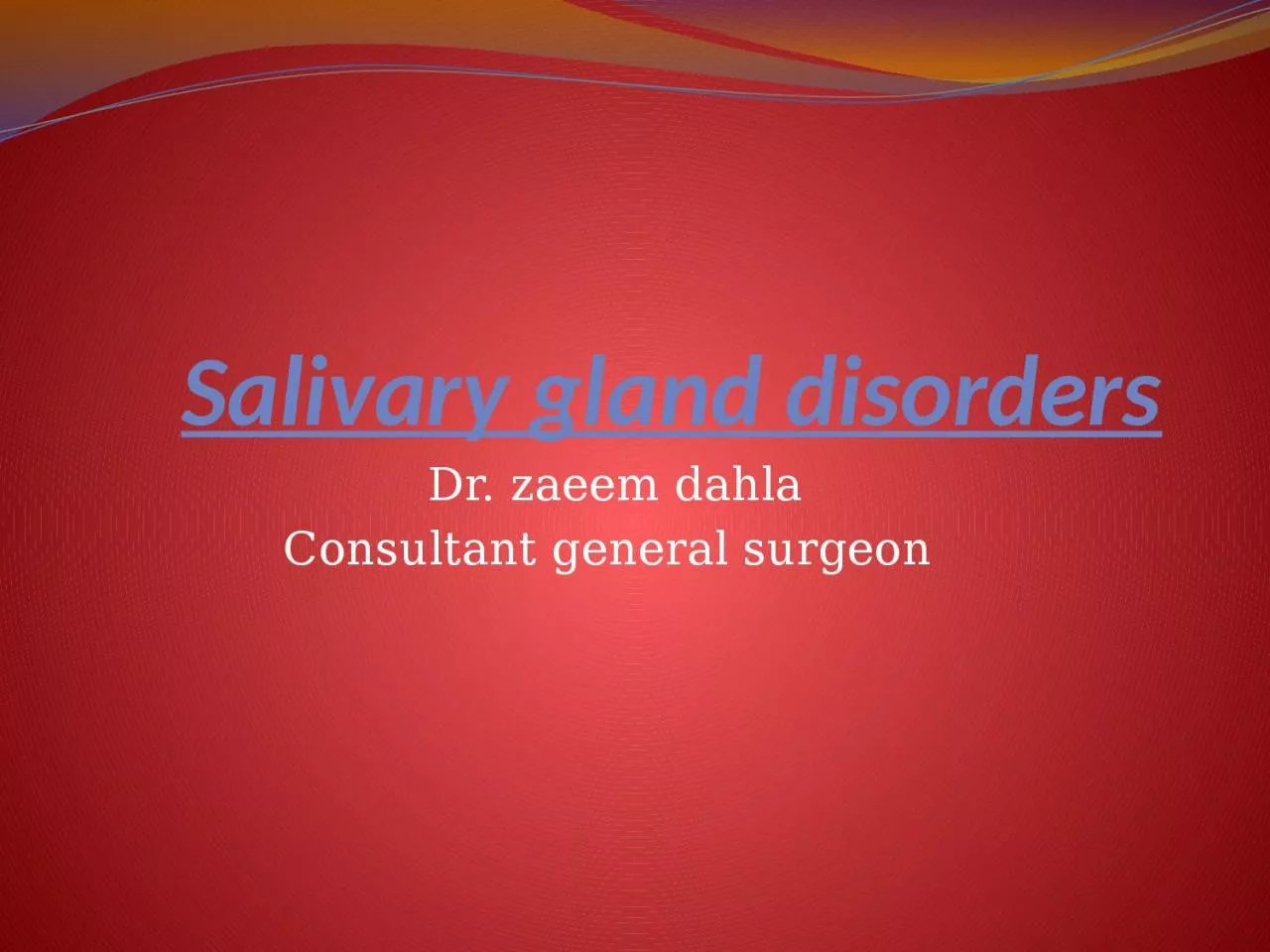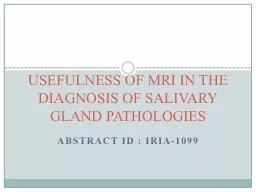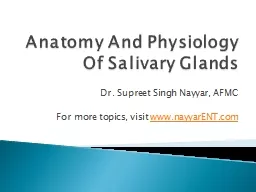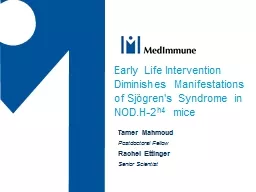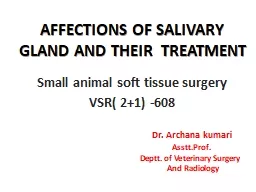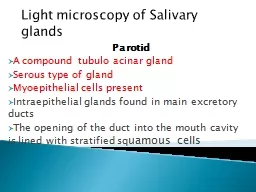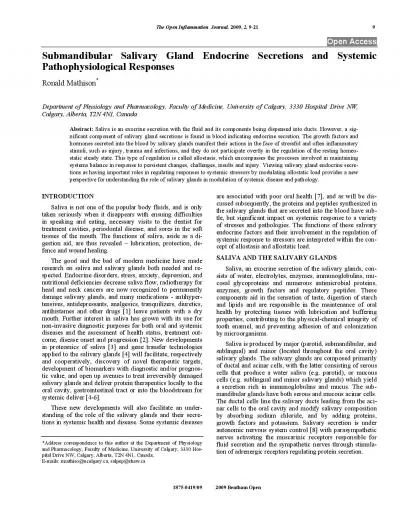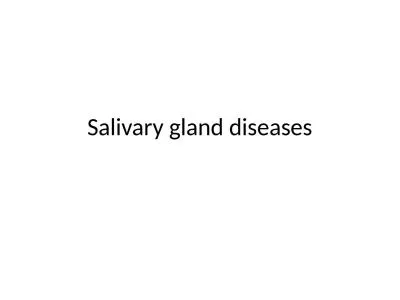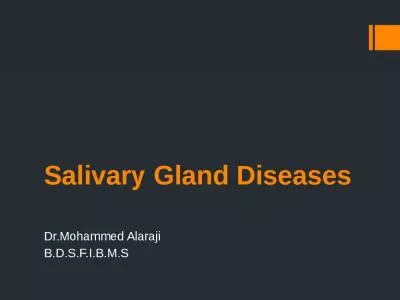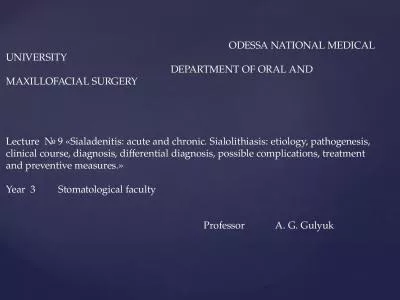PPT-Salivary gland disorders
Author : Lionheart | Published Date : 2022-08-03
Dr zaeem dahla Consultant general surgeon objectives To know the surgical anatomy of salivary glands Autonomic innervations of SG and its effect on function
Presentation Embed Code
Download Presentation
Download Presentation The PPT/PDF document "Salivary gland disorders" is the property of its rightful owner. Permission is granted to download and print the materials on this website for personal, non-commercial use only, and to display it on your personal computer provided you do not modify the materials and that you retain all copyright notices contained in the materials. By downloading content from our website, you accept the terms of this agreement.
Salivary gland disorders: Transcript
Download Rules Of Document
"Salivary gland disorders"The content belongs to its owner. You may download and print it for personal use, without modification, and keep all copyright notices. By downloading, you agree to these terms.
Related Documents

